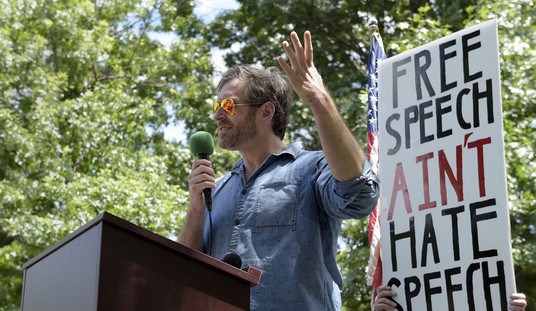Adnan Hajj’s infamous “fauxtograph” was so crudely modified that a group of bloggers could break it down and tear it apart within the space of a few hours (ahh, good times, good times, as Jonah Goldberg might say). But In TCS Daily, Rand Simberg asks, “what if the photographer was as good with photoshop as the web professional who exposed him?”
What if he knew how to fake the photo in such a way that it would not only be not obvious, but difficult to discern that it was a fake? As tools advance — and the recent spate of CGI movies from Hollywood and other film centers should demonstrate this explosion of technology — and people, including unscrupulous and ideological people, learn to use them, it will in fact be much more difficult to know whether or not a published picture accurately represents the event that it purports to show.
How, then, to know if a published photo is, in a paraphrase of the old commercial, real, or Memorex?
There are no obvious easy solutions to this problem, other than the traditional ones for validating evidence — chains of custody. Press photographers could be required to use certified cameras that time stamp pictures in an encrypted way that doesn’t permit modifying the stamp. They could go to accredited image processors who would verify the validity of the original picture from the camera (perhaps even uploading it to a certified notary storage site), and describe any image processing they performed, at risk of loss of accreditation if they pull any funny business. This would, of course, come at a cost, in both dollars for the intermediary and (more importantly for the news business) timeliness. Unfortunately, in the wake of this and other news bias scandals, any news organization that doesn’t pull in the reins on its stringers and freelancers, and implement a solution like this, is going to suffer in credibility as time goes on.
And of course, it’s not just an issue for the MSM. If the blogosphere wants to continue to build its own credibility, and self-publish home-grown photos (and videos) as part of its own increasing range of reporting, it will have to institute similar measures. Like many problems, this may in fact represent an enormous market opportunity.
When RatherGate broke in 2004, Glenn Reynolds astutely noted that the Blogosphere’s biggest weakness in the eyes of the MSM is actually its best feature:
The world of Big Media used to be a high-trust environment. You read something in the paper, or heard something from Dan Rather, and you figured it was probably true. You didn’t ask to hear all the background, because it wouldn’t fit in a newspaper story, much less in the highly truncated TV-news format anyway, and because you assumed that they had done the necessary legwork. (Had they? I’m not sure. It’s not clear whether standards have fallen since, or whether the curtain has simply been pulled open on the Mighty Oz. But they had names, and familiar faces, so you usually believed them even when you had your doubts.)
The Internet, on the other hand, is a low-trust environment. Ironically, that probably makes it more trustworthy.
That’s because, while arguments from authority are hard on the Internet, substantiating arguments is easy, thanks to the miracle of hyperlinks. And, where things aren’t linkable, you can post actual images. You can spell out your thinking, and you can back it up with lots of facts, which people then (thanks to Google, et al.) find it easy to check. And the links mean that you can do that without cluttering up your narrative too much, usually, something that’s impossible on TV and nearly so in a newspaper.
(This is actually a lot like the world lawyers live in — nobody trusts us enough to take our word for, well, much of anything, so we back things up with lots of footnotes, citations, and exhibits. Legal citation systems are even like a primitive form of hypertext, really, one that’s been around for six or eight hundred years. But I digress — except that this perhaps explains why so many lawyers take naturally to blogging).
You can also refine your arguments, updating — and even abandoning them — in realtime as new facts or arguments appear. It’s part of the deal.
This also means admitting when you’re wrong. And that’s another difference. When you’re a blogger, you present ideas and arguments, and see how they do. You have a reputation, and it matters, but the reputation is for playing it straight with the facts you present, not necessarily the conclusions you reach. And a big part of the reputation’s component involves being willing to admit you’re wrong when you present wrong facts, and to make a quick and prominent correction.
When you’re a news anchor, you’re not just putting your arguments on the line — you’re putting yourself on the line. Dan Rather has a problem with that. For journalists of his generation, admitting an error means admitting that you’ve violated people’s trust. For bloggers, admitting an error means you’ve missed something, and now you’re going to set it right.
What people in the legacy media need to ask themselves is, which approach is more likely to retain credibility over time? I think I know the answer. I think Dan Rather does, too.
Well, if Dan does know the future of journalism, it’s playing it awfully close to his Brooks Brothers grey flannel vest. But otherwise, that is a safe prognosis for the future of journalism, both MSM, and DIY.










Join the conversation as a VIP Member